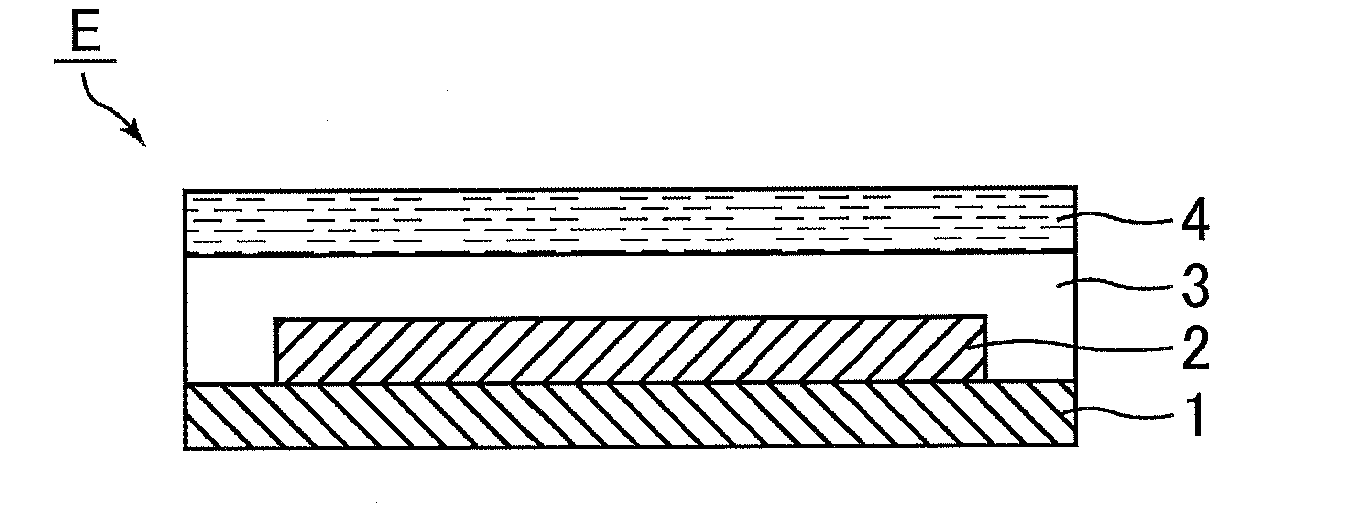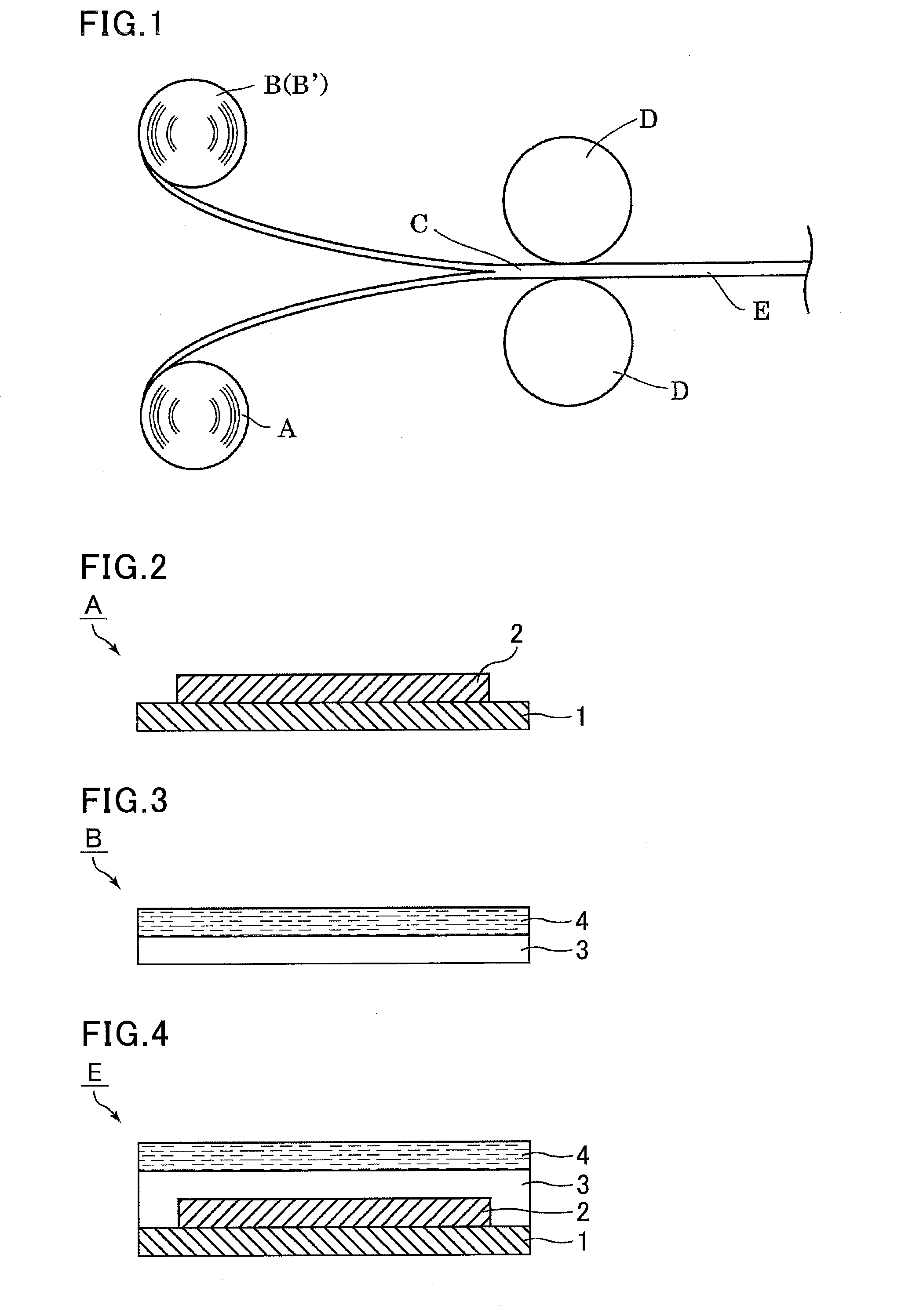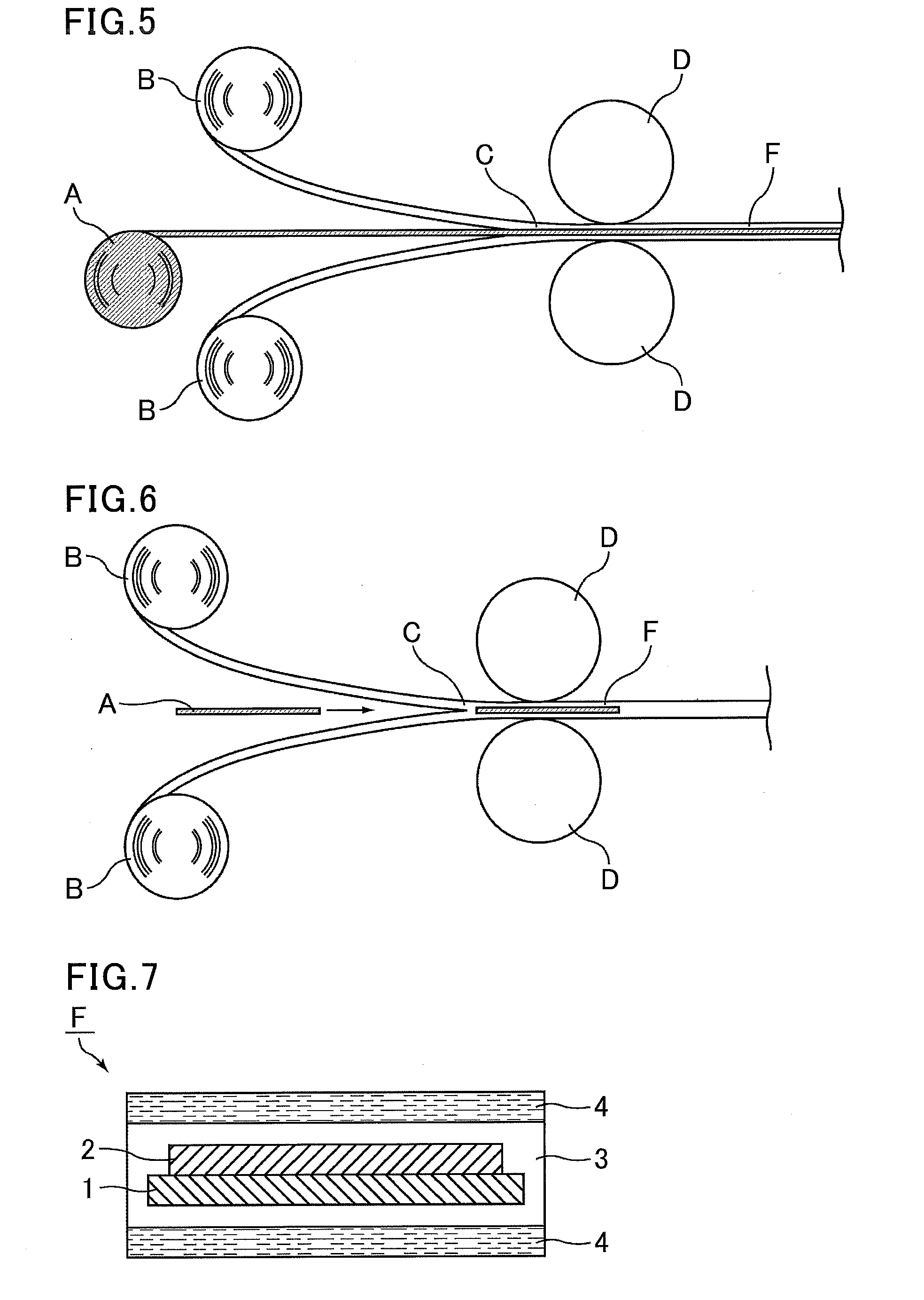Method for manufacturing flexible solar battery module
a solar cell and module technology, applied in the direction of synthetic resin layered products, chemistry apparatus and processes, other domestic articles, etc., can solve the problems of long time to finish bonding, use of eva resins, extended production time and generation of an acid
- Summary
- Abstract
- Description
- Claims
- Application Information
AI Technical Summary
Benefits of technology
Problems solved by technology
Method used
Image
Examples
examples 13 to 22
, Comparative Examples 7 to 15
[0159]An adhesive layer composition that contained 100 parts by weight of an ethylene-acrylic acid ester-maleic anhydride ternary copolymer resin including predetermined amounts of units as shown in Tables 4 and 5 (in the tables, EA represents ethyl acrylate, MA represents methyl acrylate, and BA represents butyl acrylate), and a predetermined amount (shown in Tables 4 and 5) of a silane compound selected from 3-glycidoxypropyltrimethoxysilane (trade name: “Z-6040”, available from Dow Corning Toray Co., Ltd.) and 2-(3,4-epoxycyclohexyl)ethyltrimethoxysilane (trade name: “Z-6043”, available from Dow Corning Toray Co., Ltd.) was molten and kneaded in a first extruder at 250° C.
[0160]Separately, a predetermined fluoropolymer (shown in Tables 4 and 5) selected from polyvinylidene fluoride (trade name: “Kynar 720”, available from Arkema), a vinylidene fluoride-hexafluoropropylene copolymer (trade name: “Kynar Flex 2800”, available from Arkema), and a mixture...
PUM
| Property | Measurement | Unit |
|---|---|---|
| Tm | aaaaa | aaaaa |
| Tm | aaaaa | aaaaa |
| Tm | aaaaa | aaaaa |
Abstract
Description
Claims
Application Information
 Login to View More
Login to View More - R&D
- Intellectual Property
- Life Sciences
- Materials
- Tech Scout
- Unparalleled Data Quality
- Higher Quality Content
- 60% Fewer Hallucinations
Browse by: Latest US Patents, China's latest patents, Technical Efficacy Thesaurus, Application Domain, Technology Topic, Popular Technical Reports.
© 2025 PatSnap. All rights reserved.Legal|Privacy policy|Modern Slavery Act Transparency Statement|Sitemap|About US| Contact US: help@patsnap.com



